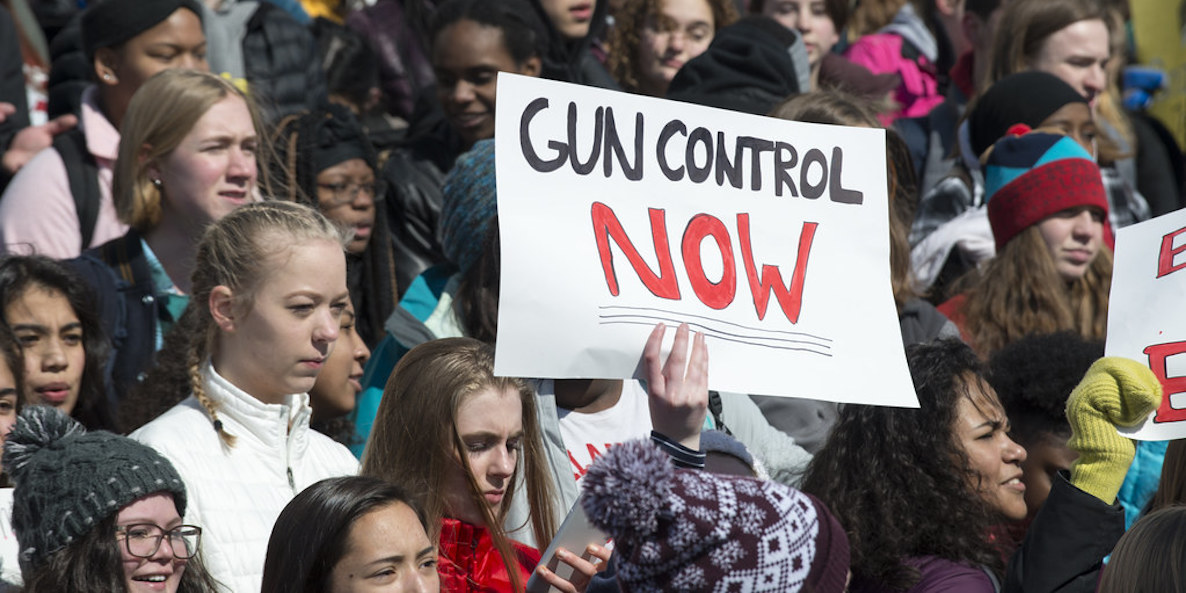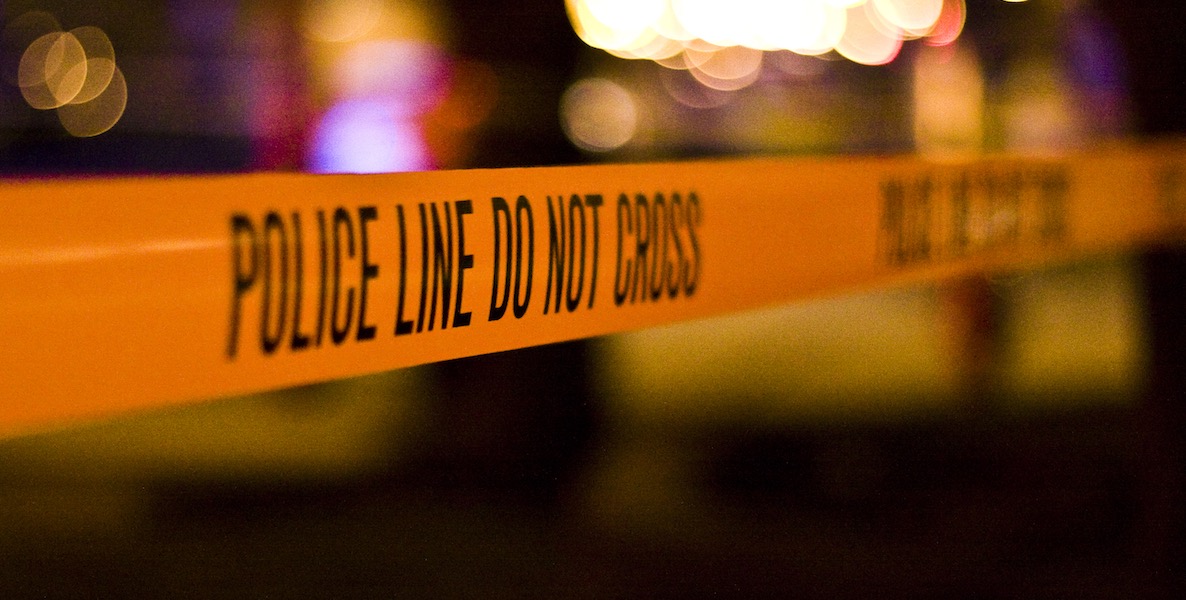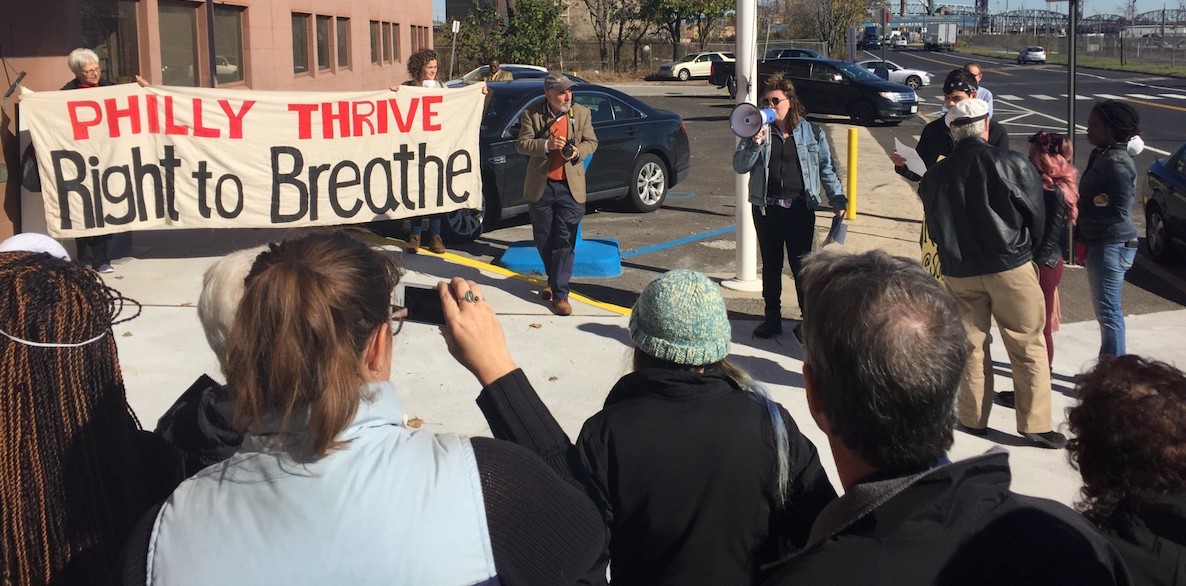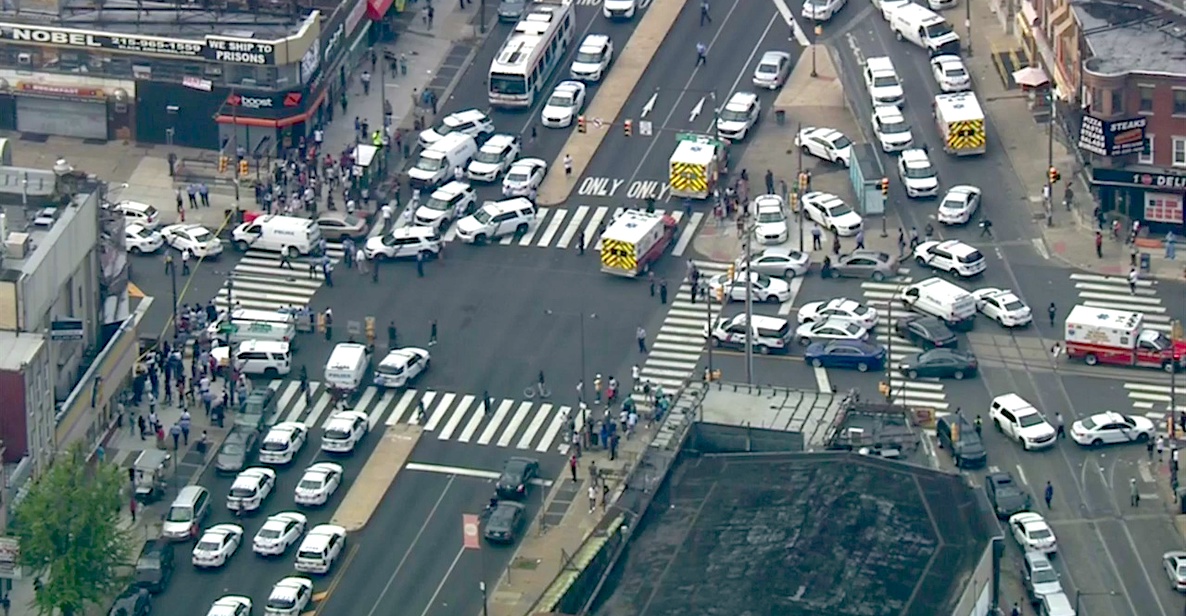As worried Philadelphians and the world were gripped by images of a fierce, 8-hour standoff of gun battles and crouching police, many Philadelphians weren’t really all that surprised by one aspect: where it went down.

Prefer the audio version of this story? Listen to this article in CitizenCast below:


Nicetown may be one of the more oxymoronic designations for a large city neighborhood brutally tucked into an armpit corner of North Philadelphia. There are constant jokes surrounding its name, even while most of its residents have struggled to carve out a defiant contradiction of normalcy. Wednesday’s epic shootout is a sign of Nicetown-Tioga’s generations-long war with itself and the many problems that have plagued it.
Of course, a situation where a half-dozen Philadelphia police officers are shot—thankfully, perhaps miraculously, doing okay—is a situation that will dramatically alter the city’s usual discourse on violence. Philly has had a growing gun violence problem for a while; it’s steadily creeped into crisis status. While largely confined to the city’s poorest pockets, it seemed to take a new turn with a random afternoon shooting in Center City this Monday. Perhaps that began to shake half-slumbering city officials who work, eat and play in the city’s central district, a cloud of worry suddenly darkening the sidewalk beneath them upon realization the violence could begin spreading into Philly’s hub of business, politics and tourism.
The police aren’t the only ones outgunned or overwhelmed—Nicetown’s residents are, too, on more levels than one. The signs have long been there of a community screaming for help.
Wednesday’s shooting of six Philly police officers in the span of one late afternoon, however, completely outgunned that—and may finally prompt a marked pivot from cute talk to rapid response. It’s sad that it took a near-deadly rampage to get to that. City Council is noticeably missing; at a time when homicides this year are on path to beat the record number of homicides from the last, they are on a recess. Optically, it shows a complete leadership collapse that during a violent (and record-breaking heat + flood) summer, City Council is on vacation. We saw the Mayor, District Attorney and Police Commissioner up front, but we certainly didn’t see the City Council President yesterday evening.
![]()
However, whatever the new response is can’t be limited to just visible outrage over barricaded criminals having better firepower than police. “Our officers need help, they need help with gun control. They don’t deserve to be shot at with an unlimited supply of weapons and unlimited supply of bullets,” said a perturbed Mayor Kenney outside Temple Hospital after checking in on wounded officers. “This government, both on the federal and the state level, don’t want to do anything about getting these guns off the streets and getting them out of the hands of criminals.”
![]()
He’s absolutely right, and no better time to say that than while national cameras watch on. But, it’s also that perfect time for equal pounds of outrage and protest over how badly conditioned Nicetown-Tioga is and always has been.
The fear here is that yesterday’s shooting turns into an opportunity to make Philly’s violence problem all about police needs and not enough about the needs of what is, arguably, Philadelphia’s most distressed neighborhood. Ironically, it was just highlighted as exactly that in the city Health Department’s first ever “The Health of Philadelphia’s 46 Neighborhoods” report. This is where, unintentionally, this week’s grisly episode makes all kinds of unfortunate sense.
![]()
General quality of life indicators for Nicetown (one of Philadelphia’s most majority-Black communities) are among the most troubling citywide, especially when compared to Philly’s 45 other neighborhoods. In fact, it ranks 45 overall on health outcomes, just one bottom slot shy of opioid battered Upper Kensington and 41 on health factors such as socioeconomic variables, physical environment, behavior and clinical care. Its life expectancy is about the lowest in the city—just 63.9 years for men and 74.5 years for women, compared to the city average of 72.3 and 79.3, respectively. In Center City East, meanwhile, the life expectancy is 82 and 84.2 years for men and women, respectively.
Clearly, something is happening in Nicetown—and no one should be surprised because something has always happened there. You can see it just by driving or walking through it. For the past 11 years, Nicetown-Tioga has been among Philadelphia’s Top 10 Deadliest Neighborhoods, according to Philadelphia Inquirer homicide rate analysis. Nicetown homicides, in fact, have been on an uptick in recent years, and—even besides homicides—it holds the grim distinction of being the most violent place in the city, according to Health Department data: nearly 245 violent crime incidents per 100,000 people versus the citywide average of nearly 96 per 100,000 (and the Bustleton section’s low of just 14).
The entire Nicetown population is under 37,000 residents.
Nicetown homicides have been on an uptick in recent years, and—even besides homicides—it holds the grim distinction of being the most violent place in the city.
Cancer mortality rates are also off chart compared to less impoverished and more affluent sections of the city. There are nearly 240 cancer cases per 100,000 people in that section of the city, compared to other sections—like Chestnut Hill—with a little over half that. And, just as we noted this January in a separate Reality Check column, food insecurity rates also play a major role in spiking violence.
![]()
Philadelphia’s food insecurity rate is at 22 percent, higher than the national average of 19 percent. There we see overlay: When we look at a map of gun violence throughout Philadelphia, via the Inquirer, it is fascinating: The maps of poverty, gun violence and food insecurity are nearly identical. Massive stretches of North Philadelphia and West Philadelphia, areas with majority black populations, show deep pockets of 20 percent to over 30 percent food insecurity rates. In Nicetown-Tioga, rates appear above the 30 percent threshold.
We haven’t even started touching on the air and water pollution indicators in Nicetown, a place where residents and community activists have long complained of or been brutalized by high rates of asthma, respiratory illness and other chronic diseases and cancer. The city, for some reason, keeps that data hidden, refuses to deeply assess it or is indifferent on the major impacts pollution have on health, mental health and violence trends. What we do know is that there is a link between air pollution and rising crime, as studied in this 2018 Psychology Today study here and the data presented from a 2015 study of Chicago here. Nicetown’s high violence is aggravated by that.
Yet, the same mayor who (rightfully so) expresses anger at his police being outgunned in Nicetown is the same mayor who’s allowing (over resident objections) the city’s mass transit agency, SEPTA, to build a massive natural gas plant there, a methane-leaking health hazard that will exacerbate existing bad health outcomes.
This should not be snarkily or politically misconstrued as an excuse for the shooters. It’s far from it. It’s merely strategic awareness to inform residents, city leaders, police and community organizations that they have much work to do in preventing another and potentially much more severe (and deadly) shootout of this magnitude from occurring again. The police aren’t the only ones outgunned or overwhelmed—Nicetown’s residents are, too, on more levels than one. From city neglect to environmental racism, the signs have long been there of a community screaming for help. Let’s hope someone in a position to do something heard that cry Wednesday evening.
Charles D. Ellison is Executive Producer and Host of “Reality Check,” which airs Monday-Thursday, 4-7 p.m. on WURD Radio (96.1FM/900AM). Check out The Citizen’s weekly segment on his show every Tuesday at 6 p.m. Ellison is also Principal of B|E Strategy, catch him if you can @ellisonreport on Twitter.
Photo via CBS Philly





